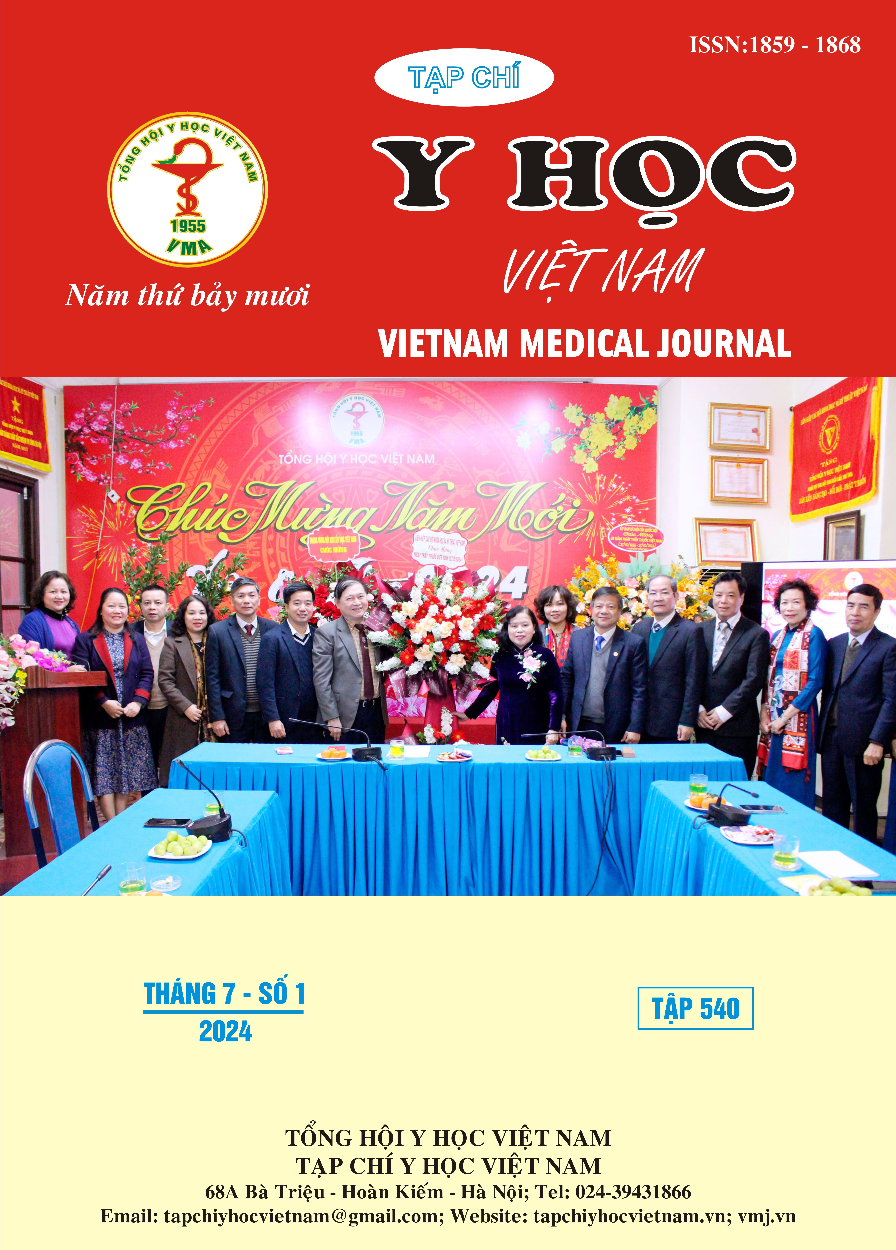SOME FACTORS OF LABOR THAT AFFECT BABY AFTER BIRTH AT NGHE AN GENERAL HOSPITAL IN 2022
Main Article Content
Abstract
Objectives: To describe the characteristics of labor time, some factors related to labor time with babies after birth at the Department of Obstetrics and Gynecology of Nghe An General Hospital in 2022. Research Methods: A prospective descriptive study. Results: A study of 295 women who gave birth normally at full term to investigate the clinical characteristics of labor time and some factors related to the baby after birth at the Department of Obstetrics and Gynecology, Nghe An General Hospital. Information was collected by examination and pre-designed medical records. Results: The average labor time of pregnant women and their babies was 19.32 ± 12.19 hours; of pregnant women 11.90 ± 7.90 hours. The rate of urinary retention was 13.5%; the rate of postpartum hemorrhage is 2.4%; the indication rate for artificial amniotomy was 73.2%. The duration of labor in the first stage of the postpartum group of women with urinary retention was longer than that of the group without postpartum urinary retention in both chicks and chickens (p < 0.05). The duration of stage 3 labor in the group with postpartum haemorrhage was statistically significantly larger than in the group without postpartum hemorrhage (p = 0.01). There was a weak positive correlation between the duration of stage 1a labor and birth weight in both pregnant women (r = 0.264, p = 0.004, r2 = 0.07) and women with low birth weight (r = 0.07). 0.297, p<0.001, r2 = 0.088). There was a weak positive correlation between the duration of the second stage of labor and the birth weight (r = 0.16, p = 0.017, r2 = 0.016). The duration of labor in the first stage of the postpartum group of women with urinary retention was longer than that of the group without postpartum urinary retention in both chicks and chickens (p < 0.05). Conclusion: Prolonged labor is an increased duration of labor compared with women with the same risk factors. Labor for a long time can lead to serious complications or sequelae if not detected early and treated promptly. Complications may be: fetal distress in labor, threatened uterine rupture, uterine rupture, genitourinary fistula formation of the bladder or rectum, neonatal sepsis, postpartum infection. Therefore, monitoring the labor process and early detection and treatment of possible problems will limit the changes that affect the health of the mother and the baby after birth.
Article Details
Keywords
prolonged labor, newborn baby
References
2. Chen H, Cao L (2018), "Factors affecting labor duration in Chinese pregnant
3. women". Medicine (Baltimore). 7(52):e13901.
4. Maged AM (2017), "Prospective study of the effect of maternal body mass index on labor progress in nulliparous women in Egypt". Int J Gynaecol Obstet. 139(3):329-35.
5. Hilliard AM (2012), "Effect of obesity on length of labor in nulliparous women". Am J Perinatol. 29(2):127-32.
6. Leftwich HK (2015), "Does increase in birth weight change the normal labor curve" Am J Perinatol. 32(1):87-92.


